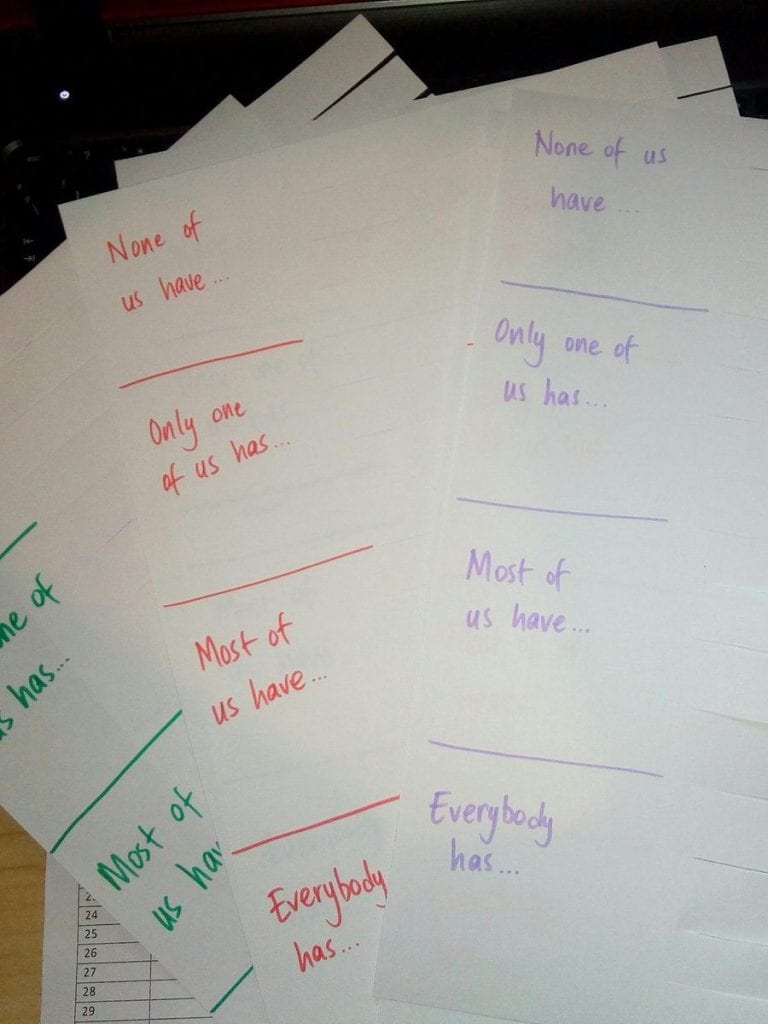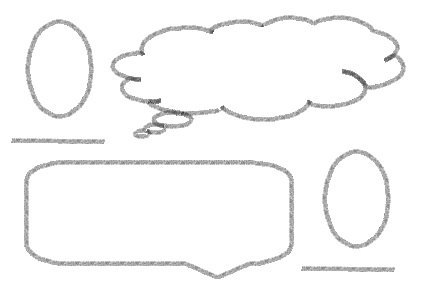None of us have…
It’s been one of those weeks, settling into a familiar environment, but with a number of kinks along the way. The school I work at has smartboards in every classroom – but as these hadn’t been used since February, there were some coming-out-of-hibernation issues this week. So, I was looking for paper-light activities as I had a two-hour class with no photocopying facilities and, at the point of planning the lesson, no projector.
Onestopenglish came to the rescue and I found a great activity from Scott Thornbury. Here’s how I adapted his One of us activity:
 Before the class, I prepped a sheet for each group of 4/5 students, so that there would be four groups working in the classroom. I divided the page into four and wrote:
Before the class, I prepped a sheet for each group of 4/5 students, so that there would be four groups working in the classroom. I divided the page into four and wrote:
- None of us have…
- Only one of us has…
- Most of us have…
- Everybody has…
Then, on the right-hand side of the page, I cut each section into four strips.
As a warmer, we did a bit of hangman with the questions:
Have you ever…?
- broken a bone?
- met someone famous?
- done something dangerous?
- lived abroad?
After they had worked out the questions, they had a couple of minutes to discuss the questions in pairs and then feedback to the class – at which point I found out one of them had broken one of his vertebra during a parachute jump and spent two months in bed!
Setting up the activity, I divided the class into four groups and gave each one a piece of paper. I told them they had ten minutes to complete the sentences, using the present perfect. Whilst they were completing their sentences, I monitored and helped with vocabulary, and corrected participles and other errors.
When groups had finished their sentences, I told them to tear off the sentence ends, so each group had 16 slips of paper.
In the next stage, groups swapped slips and tried to put the other group’s sentences in the correct section. This was quite a fun part as they started using their detective skills; for example one phrase was ‘got married’ and as there was one older learner in that group, they thought he might be married and put it in the Only one of us has… section.
Whilst they were doing this, I wrote some phrases on the board to support them in the final stage:
- We think none of you have…
- We think only one of you has…
- etc.
Finally, when students had placed the sentences in each section, they shared their ideas with the other groups. This was also fun, as one group had written quite a random phrase, ‘made cheese’, and the group which had their slips thought it was Only one of us has… because it was such an abscure thing to write. This was a great opportunity to teach the phrase a red herring!
In all, the warmer and the activity took about 55 minutes and was also a great opportunity for new vocabulary to come out as well as a chance to review participles. Also, it was a wonderful way to learn more about the students, which is always a bonus!
